ReservationSearch and reserve rooms
Click here to confirm, change or cancel your reservation
提携法人専用予約
2024.03.31
"Yukimin" - Meet unique wooden carved bears in a space filled with the warmth of handmade items
NEIGHBORS
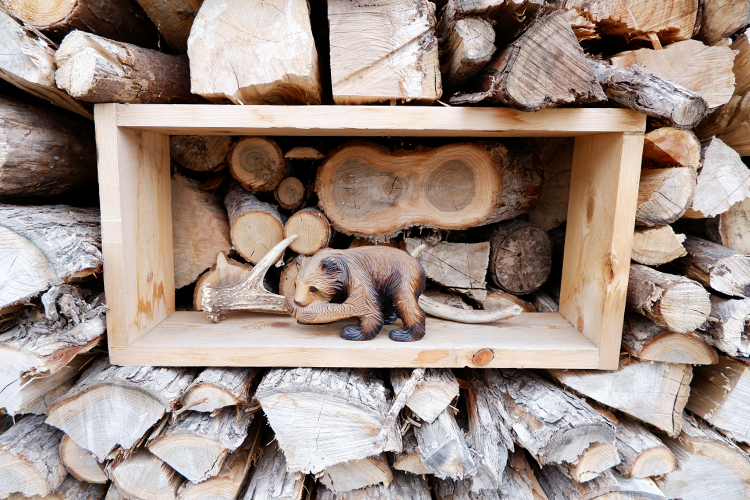
With the arrival of the "Hokkaido Tourism Boom," many "wooden carvings of bears holding salmon" were made as "Hokkaido's representative folk crafts." Meanwhile, bears that have evolved in their own way by artisans and artists from all over the country have once again attracted attention in recent years.
There are more and more opportunities to see exhibitions and events related to "wooden carved bears" being held all over the country, and more and more people are bringing them into their homes as interior decorations and accessories that blend in with modern spaces.
We visited Yubokumin, a shop in the Soen area of Sapporo that sells a wide range of woodcarvings, mainly wooden carved bears, and heard about the appeal of woodcarving and the story behind the craftsmanship.
"Yukimin" delivers the charm of "woodcarving" products
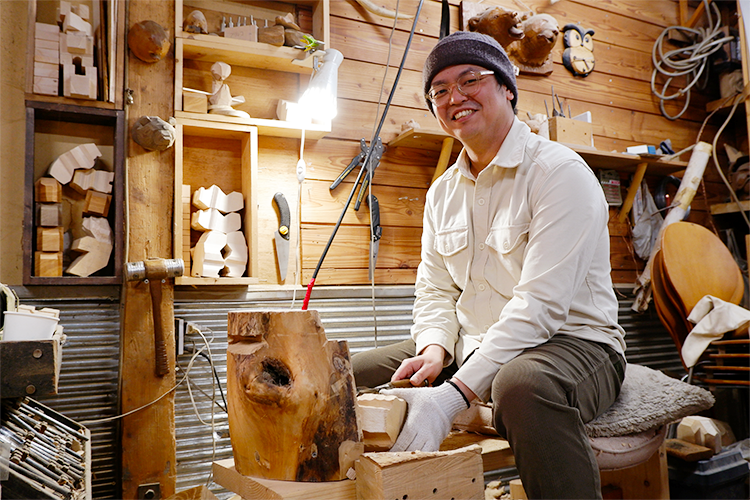
The person who spoke to us was Kawaguchi Naoto, the son of his father, Kawaguchi Takuji, who runs the woodcarving shop "Yukimin" with him and works as a craftsman himself, carving wooden bears.
Mr. Kawaguchi and his son, who run a wholesale tourist souvenir business specializing in woodcarvings, inherited the business from their grandmother's generation, have seen firsthand the changes in demand from the time when "woodcarved bears" were all the rage and extremely popular to the present. After searching for a new way to convey the appeal of woodcarving, they opened "Yukimin," a store complete with a workshop, in 2016.
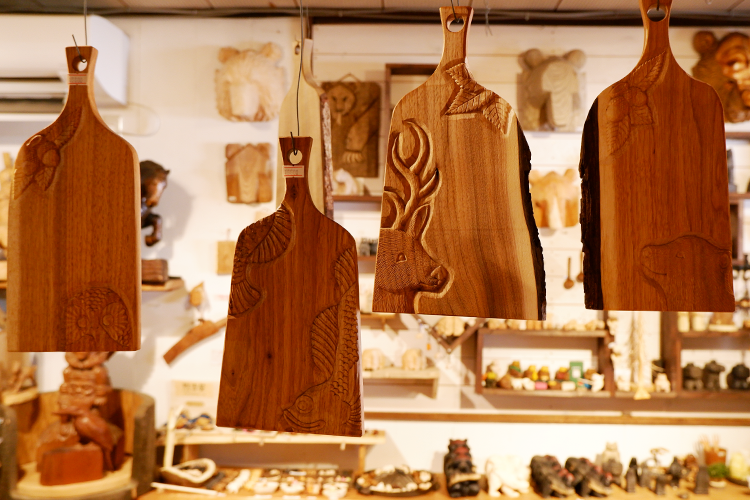
The store stocks highly creative products carved by about 20 craftsmen and artists, including those made by craftsmen whom Kawaguchi and his son have ties to while running their family business, and those whose styles they like and have purchased. Some of the products are reliefs of plants and animals carved into the flat surface to make them stand out, and the warmth of handmade craftsmanship tickles your curiosity and makes you want to stare at them.
"I especially like things that are carefully carved. This is something that people who have loved wood carvings for a long time can relate to, but you can tell right away when you see it," says Kawaguchi. He says that the care is shown in how well the tools are sharpened, how they are carved, and "how even parts that may not seem noticeable at first glance are carved in detail."
"Wooden Carved Bears" are highly regarded as "art"
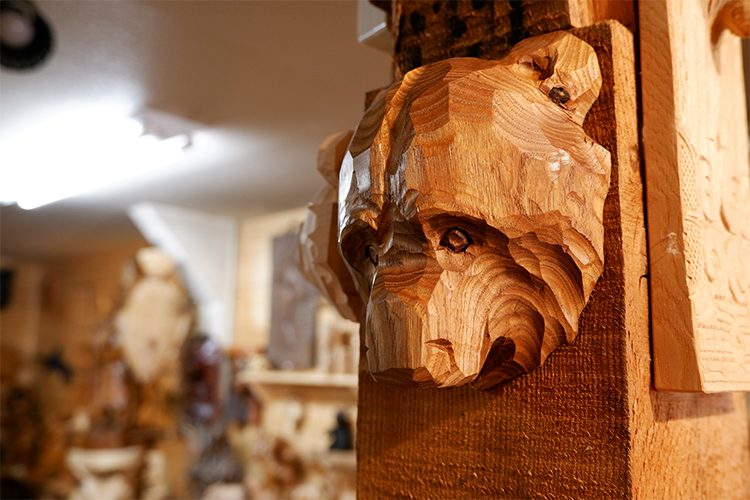
Kawaguchi's creation: a "mask" carved from just the face of a bear
The majority of the bears that line the "Yukimin" are carved wooden bears. Born in Yakumo Town and Asahikawa City in Hokkaido, these bears have different roots, but their artistic qualities have been nurtured by artisans and artists from all over the prefecture, and they are now considered to be works of art. Works by Sato Kenji of Asahikawa, also known as "Ken-chan Bear," are also on display, and it seems that many people make the effort to visit in search of bears.
There are traditional bears that are faithful to the real thing, with the fur rendered in detail, and "abstract bears" that are shaped using "face carving." There are also a variety of poses, including "crawling bears," "sitting bears," "anthropomorphic bears," and "masks" with only the face carved, all of which are unique and fascinating to visitors.
To protect "culture", he became a craftsman
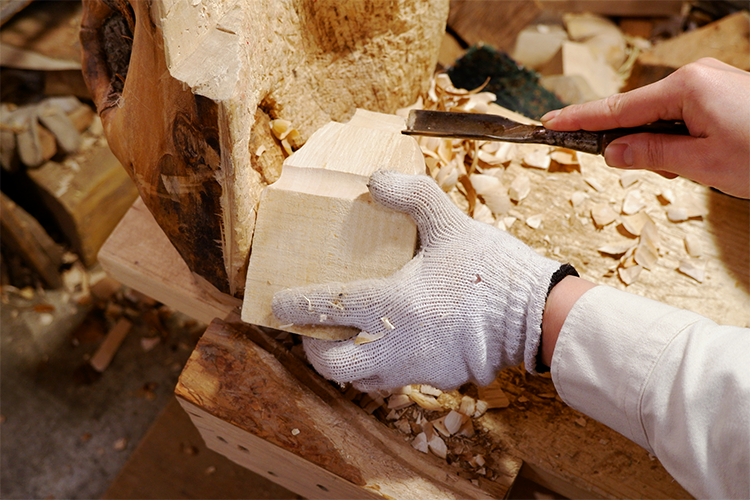
He carries several carving knives depending on the purpose.
Kawaguchi says that through his interactions with craftsmen in the wholesale business, he has been fascinated by many woodcarvings that make him think, "I definitely want to deliver this to my customers." However, even though "woodcarved bears" have been attracting attention again in recent years, the fact remains that the number of people who are carrying on the technique as a livelihood is decreasing, and he has not been able to shake off the sense of crisis.
"If there is no one to take over the skills, it means that there will be no suppliers for the family business. I thought it would be no good to wait for the next young person to come along, so I thought, 'I have to do it myself,' and that's what prompted me to start carving," says Kawaguchi. In order to preserve both the family business and the culture of 'woodcarving bears,' he embarked on the path of a craftsman.
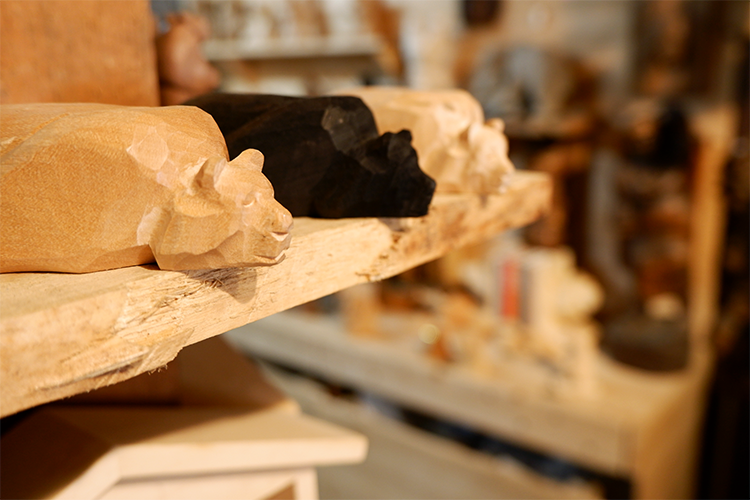
Kawaguchi's "Dare Kuma." The relaxed pose is impressive.
Although it is called a "culture," the world of "woodcarving bears" does not have a clear school, but is left to individuality. Kawaguchi has not been taught by anyone directly, but has mastered the technique by continuing to carve by imitating the works of craftsmen he has seen and by occasionally researching them.
What he values most when carving remains the same today: carving a cool "face." "This is true not only for bears but also for owls and other animals, but it is the most important part in recognizing the animal, and even when I was a wholesaler, 80% of the time I looked at the product through its "face." I think that's what has led to my current craftsmanship," he told us.
We want to make the most of the texture of wood.
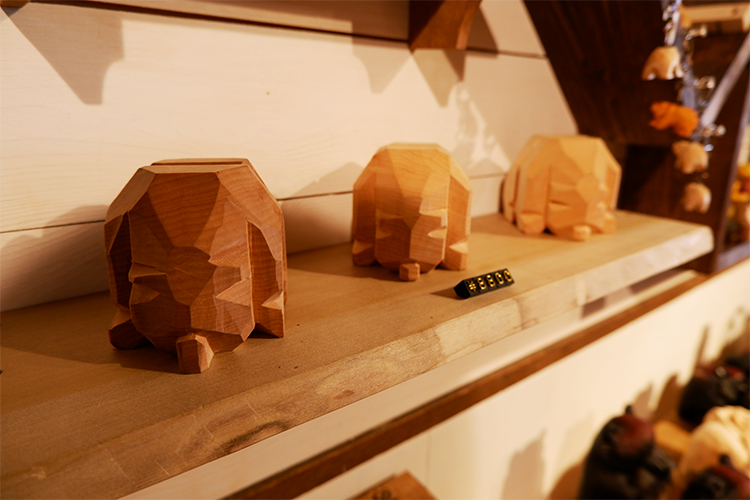
"Abstract Bear" by Kawaguchi. Even with the same shape, changing the wood species gives it a different feel.
Finally, when asked about the appeal of wood carving, Kawaguchi replied, "The differences in texture, grain, and scent of each tree species, such as Chinese linden, Chinese pagoda tree, and walnut. I think the strength of the wood itself is what makes wood carving so appealing. I want to create things that make the most of that. Beyond that, I feel that the wood itself will take care of it. It's a matter of preference, so please feel free to come and take a look."
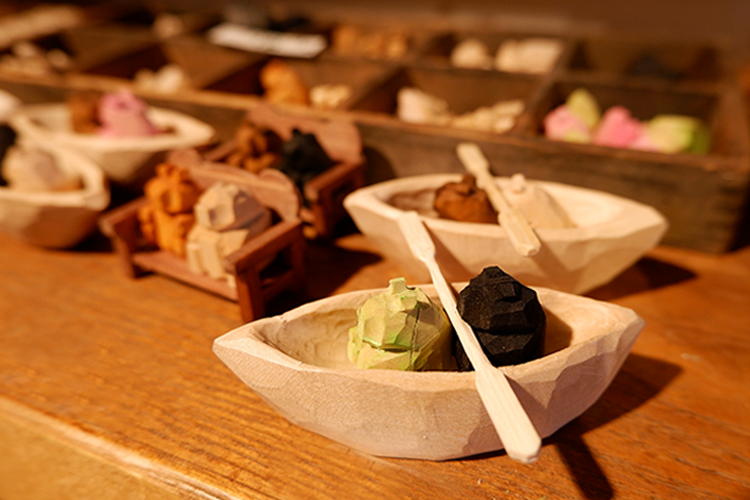
A miniature bear that makes a perfect souvenir. It's nice that you can mix and match them however you like.
The year 2024 (Reiwa 6) will mark the 100th anniversary of the birth of the "Wooden Carved Bear."
The combination of "the power that you have" and "the power of the wood" is what gives a wooden carving its appeal, and the product becomes more and more tasteful over time.
"What I can do now is to improve the level of my carving," says Kawaguchi, revealing his strict side. His days of trial and error in pursuit of the ideal form and in order to protect the family business and traditions continue.
Yubokumin
Phone number: 011-614-0535
Address: 1-1 Kita 7-jo Nishi 19-chome, Chuo-ku, Sapporo, Hokkaido
Access: 12 minutes on foot from JR Soen Station
Website: https://yuubokumin.net/
SNS: https://www.instagram.com/kiisuki1201/ (Takuji Kawaguchi) https://www.instagram.com/youbokumin1207/ (Naoto Kawaguchi)
*For details on business hours and holidays, please check the link above.



